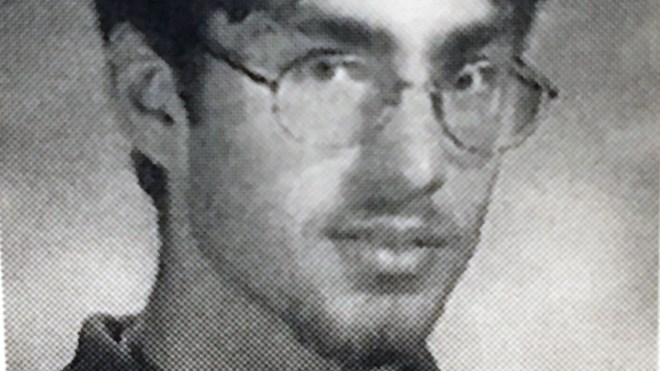The man Greater Sudbury Police believe is responsible for the 1998 murder of Renée Sweeney was arrested today in North Bay.
Robert Steven Wright, 39, who goes by "Steve" or "Steven", was linked forensically to the 20-year-old murder, said Police Chief Paul Pedersen in a press conference this afternoon from the police headquarters on Brady Street. Wright is an ER Laboratory Technician at North Bay Regional Hospital.
Wright has been charged with first-degree murder.
Police didn't release a current photo of Wright, but they did release a graduation photo of the man, taken when he was a student at Lockerby Composite student in the late 1990s.
"We have the man believed to be responsible ... in custody," Pedersen said.
Calling it one of the largest forensic cases in Canada, Pedersen said North Bay Police Service offered invaluable aid in the past several months.
Wright will be in bail court on Wednesday morning.
Det. Sgt Sandra Dicaire said despite the arrest, police are still seeking information from the public regarding the case.
Sudbury.com will update this story.
Original story
Greater Sudbury Police have called a news conference this afternoon to announce what they describe as a “significant” development in the 20-year-old Renée Sweeney murder case.
On Jan. 27, 1998, Sweeney, a 23-year-old Laurentian University student, was stabbed to death while working at Adults Only Video in Sudbury. The case remains unsolved.
The suspect, a white man in his early 20s, left his DNA on Sweeney's body, as well as on a jacket he discarded after the murder.
In March, Greater Sudbury Police said a law that recently came into effect that expands Canada's national DNA databank provides another tool that could crack the 20-year-old Renee Sweeney murder case.
Lindsay's Law, named after 14-year-old Lindsay Nicholls, who went missing on Vancouver Island in 1993, expands the databank to include DNA from missing persons, collected from personal effects such as toothbrushes.
It will also include DNA profiles from relatives of missing persons who have voluntarily made contributions, as well as from unidentified human remains.
The current DNA databank includes DNA from convicted offenders, as well as DNA collected from crime scenes.
The DNA collected at the scene has never been matched to anyone in the available DNA databases. The case remains unsolved.
“The Renee Sweeney suspect DNA is already in the crime scene index,” said Greater Sudbury Police Det. Staff Sgt. Jordan Buchanan.
Now that the new DNA databank is in place, Buchanan said Greater Sudbury Police will also be loading in all of the DNA from its historical unsolved missing persons cases — there's 10 stretching back to 1974.
In 2017, the DNA collected at the scene of Sweeney's murder was used to produce a new composite sketch of what the suspect may look like.
Using DNA collected at the murder scene, the composite image was produced by Parabon NanoLabs, a DNA technology company in Virginia, with its Snapshot DNA Phenotyping Service.
Steven Armentrout, president of Parabon NanoLabs, explained via videochat that Snapshot is the first software application in the world that can predict appearance and ancestry from DNA samples.
“It's an investigative tool to allow police to operate more efficiently,” he said, adding that police can narrow suspect lists by eliminating people whose appearance and ancestry is inconsistent with the Snapshot analysis.
From there, police can use traditional DNA analysis and other investigative techniques to make arrests.



